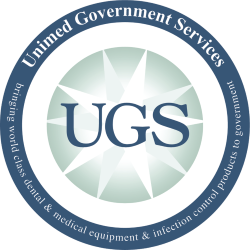 |
 |
 |
|
Home > Resources > Frequently Asked Questions (FAQs) > Personal Protective Equipment (PPE) > Question & Answer TOP What are the requirements for clinical lab jackets in dentistry? With regard to compliance, OSHA’s Bloodborne Pathogens Standard 29 CFR 1910.1030 states that it is the responsibility of the employer to determine what Personal Protective Equipment (PPE) is appropriate. However, they also state that PPE will only be considered appropriate if it prevents blood and other potentially infectious materials from reaching the skin and clothing. OSHA’s Bloodborne Pathogens Standard 29 CFR 1910.1030 includes requirements for PPE. PPE is only considered appropriate if it does not permit blood or other potentially infectious materials to pass through to or reach the employee's work clothes, street clothes, undergarments, skin, eyes, mouth, or other mucous membranes under normal conditions of use and for the duration of time which the protective equipment will be used. 1 OSHA regulations state, "general work clothes" are not covered by the Bloodborne Pathogens Standard unless they are intended to function as PPE. The dentist/employer should first determine if the clothing worn under the outer protective garment (PPE) will be considered "general work clothes" only, or if they are also intended to function PPE. 1 OSHA’s Bloodborne Pathogens Standard states as follows: Personal Protective Equipment -- 1910.1030(d)(3)(i) 1910.1030(d)(3)(xi) The authors of From Policy to Practice: OSAP’s Guide to the CDC Guidelines state the following: The garment should protect skin and street clothes that could become contaminated. The design and features should include: • High-necked/high-collared We are also aware of dental schools, dental hygiene programs, and dental assisting programs that require all faculty and students to wear knee length protective garments. They have determined that knee length is the most appropriate style because they cover a greater proportion of the workers clothing than the waist length. In summary, it is the employer’s responsibility to determine what PPE is appropriate. Personal protective equipment will be considered "appropriate" only if it does not permit blood or other potentially infectious materials to pass through to or reach the employee's work clothes, street clothes, undergarments, skin, eyes, mouth, or other mucous membranes under normal conditions of use and for the duration of time which the protective equipment will be used.1 Knee length protective garments will cover a greater proportion of the worker’s clothing. PPE should be removed prior to leaving the work area. Resources 1) US Department of Labor - Occupational Safety & Health Administration. 1910.1030 Bloodborne Pathogens. http://www.osha.gov/pls/oshaweb/owadisp.show_document?p_table=STANDARDS&p_id=10051 Accessed on February 6, 2020. 2) Organization for Safety, Asepsis and Prevention. From Policy to Practice: OSAP’s Guide to the CDC Guidelines. Page 35. Published by OSAP. 2019.
|
|||
| Last Updated on Thursday, July 08, 2021 03:56 PM |


